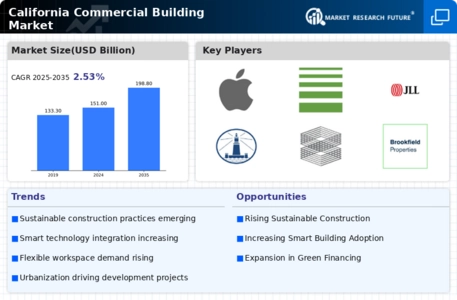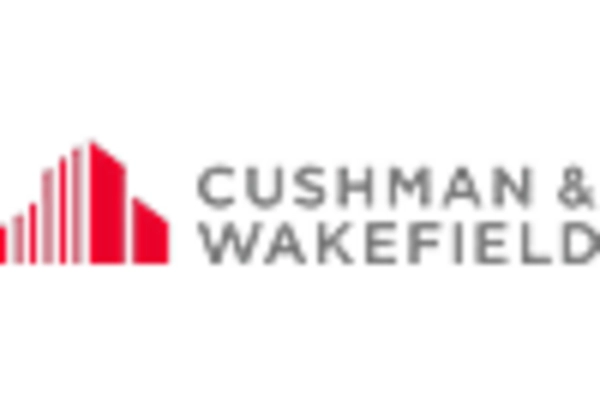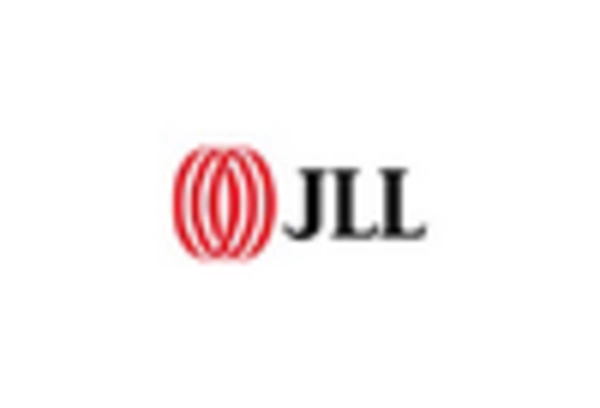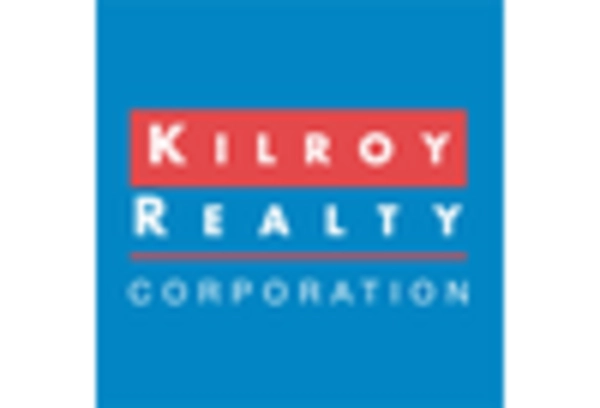Demand for Flexible Workspaces
The California Commercial Building Market is currently experiencing a shift in demand towards flexible workspaces, driven by changing work patterns and preferences. As businesses adapt to new operational models, there is a growing need for adaptable office environments that can accommodate various work styles. Co-working spaces and flexible office solutions are becoming increasingly popular, particularly in urban areas where space is at a premium. This trend is likely to influence the design and construction of new commercial buildings, with developers focusing on creating versatile spaces that cater to diverse tenant needs. As a result, the demand for flexible workspaces is expected to play a pivotal role in shaping the future of California's commercial building market.
Economic Growth and Investment
The California Commercial Building Market is currently experiencing a surge in economic growth, which appears to be driving increased investment in commercial real estate. As of 2025, California's GDP growth rate is projected to be around 3.5%, fostering a favorable environment for new construction projects. This economic expansion is likely to attract both domestic and international investors, who are seeking opportunities in the commercial sector. Furthermore, the state has seen a rise in venture capital funding, particularly in technology and innovation sectors, which may lead to a higher demand for office spaces and tech hubs. Consequently, this influx of capital is expected to stimulate the construction of new commercial buildings, thereby enhancing the overall market landscape.
Regulatory Support for Development
The California Commercial Building Market benefits from a regulatory framework that appears to support sustainable development and urban growth. Recent legislative measures, such as the California Environmental Quality Act (CEQA), have been updated to streamline the approval process for new commercial projects. This regulatory support is likely to encourage developers to pursue new construction, particularly in urban areas where demand for commercial space is high. Additionally, state incentives for green building practices may further enhance the attractiveness of new developments. As a result, the regulatory environment is expected to play a crucial role in shaping the future of the commercial building market in California.
Urbanization and Population Growth
The California Commercial Building Market is significantly influenced by ongoing urbanization and population growth trends. As of 2025, California's population is estimated to exceed 40 million, with a substantial portion residing in urban centers. This demographic shift is likely to increase the demand for commercial spaces, including retail, office, and mixed-use developments. Urban areas are experiencing a transformation, with a focus on creating vibrant, walkable communities that cater to the needs of a growing population. Consequently, developers are responding to this demand by investing in new commercial projects that align with urban living trends, thereby shaping the future landscape of California's commercial building market.
Technological Integration in Construction
The California Commercial Building Market is witnessing a notable trend towards the integration of advanced technologies in construction processes. Innovations such as Building Information Modeling (BIM), prefabrication, and smart building technologies are becoming increasingly prevalent. These advancements not only enhance efficiency and reduce construction timelines but also contribute to sustainability efforts within the industry. As of 2025, it is estimated that approximately 30% of new commercial buildings in California will incorporate smart technologies, which may lead to lower operational costs and improved tenant experiences. This technological shift is likely to attract investors and tenants alike, further stimulating growth in the commercial building sector.


















Leave a Comment